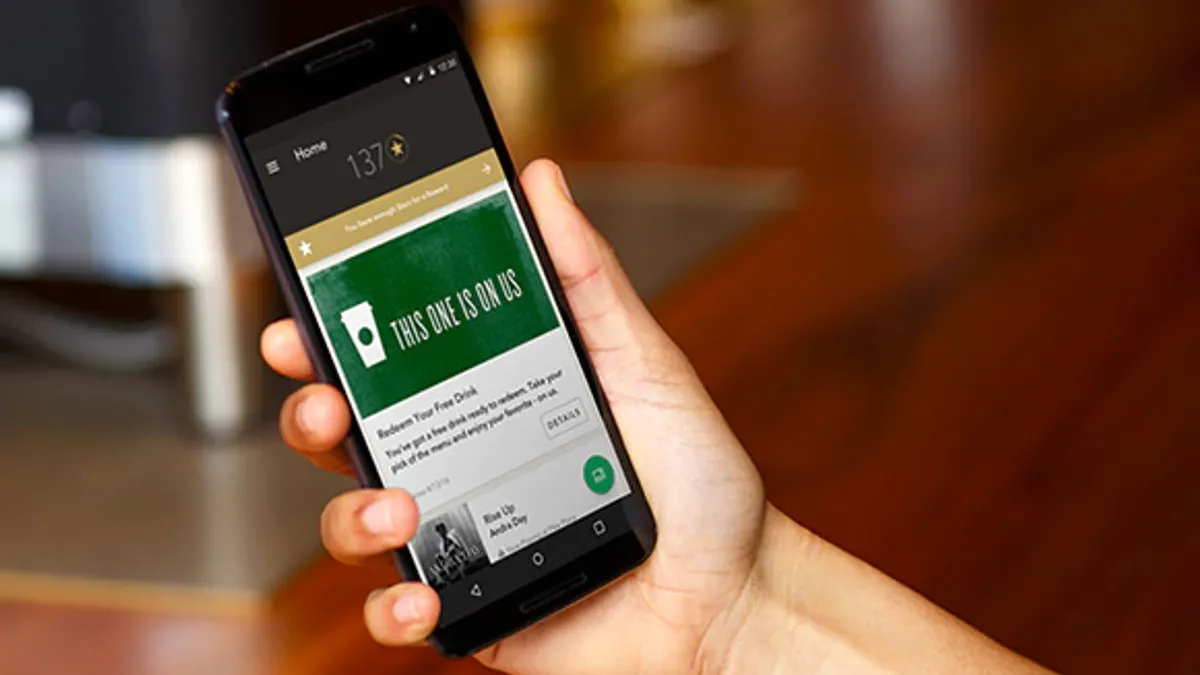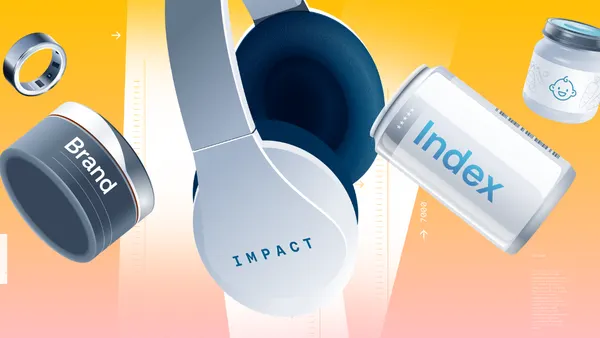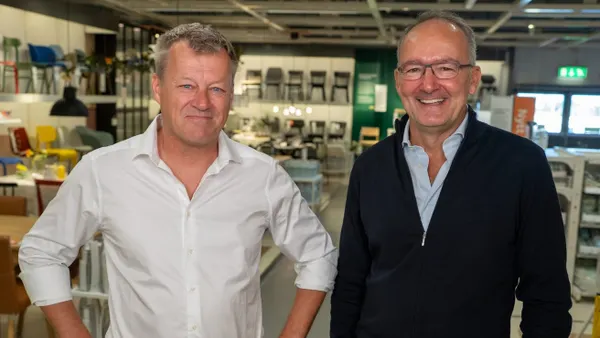Dive Brief:
- Starbucks is the most popular mobile payment app by usage in the U.S., and will remain in the lead at least until 2022, according to a press release by eMarketer sent to Retail Dive by email. It is followed by Apple Pay, Google Pay and Samsung Pay.
- For the first time this year, over 25% of U.S. smartphone users age 14 and up will make a mobile payment at least once every six months, according to the eMarketer’s latest forecast on U.S. proximity mobile payments.
- Many new payment apps are entering the market, especially from retailers creating their own, and this will cut into the share of the current top four. The four apps will continue to attract users, but their share of mobile payment users will decline.
Dive Insight:
The upside for proximity mobile payments is great, and competition for users of smartphone apps is intensifying. It’s notable that the payment app with the greatest usage is Starbucks, a single, exceedingly large, coffee chain, which links purchases made with the app to its loyalty program and is tied to mobile ordering. This might come as a surprise to people other than its customers who are highly incentivized to use the app, but this also is indicative of the limited acceptance of these apps to date.
"The Starbucks app is one of the bigger success stories in mobile proximity payments," said eMarketer forecasting analyst Cindy Liu in the press release. "It has gained traction thanks to its ability to tie payments to its loyalty rewards program. For users of the app, the value of paying with their smartphone is clear and simple — you can save time and money at the register, all while racking up rewards and special offers."
Proximity mobile payment users will grow in number by 14.5% this year, reaching a total of 55 million, according to eMarketer’s forecast. But there were over 201 million users of credit cards in the Spring of 2017, according to Statistica – which twice a year measures the number of people who used any credit card within the last three months in the U.S.
The more broadly accepted payment apps – Apple Pay, Google Pay and Samsung Pay – will close the gap with Starbucks over the next five years, said eMarketer. Starbucks will grow from 20.7 million users in 2017 to 29.8 million in 2022; Apple Pay will rise from 19.9 million users in 2017 to 27.5 million in 2022; Google Pay will increase from 9.3 million users in 2017 to 14.9 million in 2022; while Samsung Pay grows from 8.4 million users in 2017 to 13.2 million in 2022. The forecast did not cover Paypal’s mobile payment app, which is reportedly a leader and used by one in five smartphone owners, because it is not considered a proximity payment platform used at the point of sale, according to eMarkerter.
The eMarketer forecast also tracked the adoption rates for the apps. Starbucks leads in users and is accepted at its more than 27,000 worldwide locations. Apple Pay follows in user adoption, followed by Google Pay and Samsung Pay, which is the most widely accepted payment app by number of merchants.
Retailers and banks have their own mobile payment options. At least one research report from Parks Associates said that shoppers prefer mobile payment apps from retailers, and eMarketer noted that the apps allow merchants to capture valuable data about their users, while tying in loyalty features. Merchants like Walmart, Target and CVS have introduced the digital wallets. Banks that have mobile payment apps include Citibank, Chase and Wells Fargo.
Many studies predict a big future for mobile payment apps. Forrester reports that proximity payment is the fastest growing segment of mobile payments, predicted to reach $90 million by 2017. Juniper Research said 2.1 billion consumers will use mobile payments by 2019, and eMarketer predicted mobile payments will reach $314 billion by 2020. On the other hand, a report from 451 Research noted that digital wallets’ growth momentum has stalled since they were first introduced.












